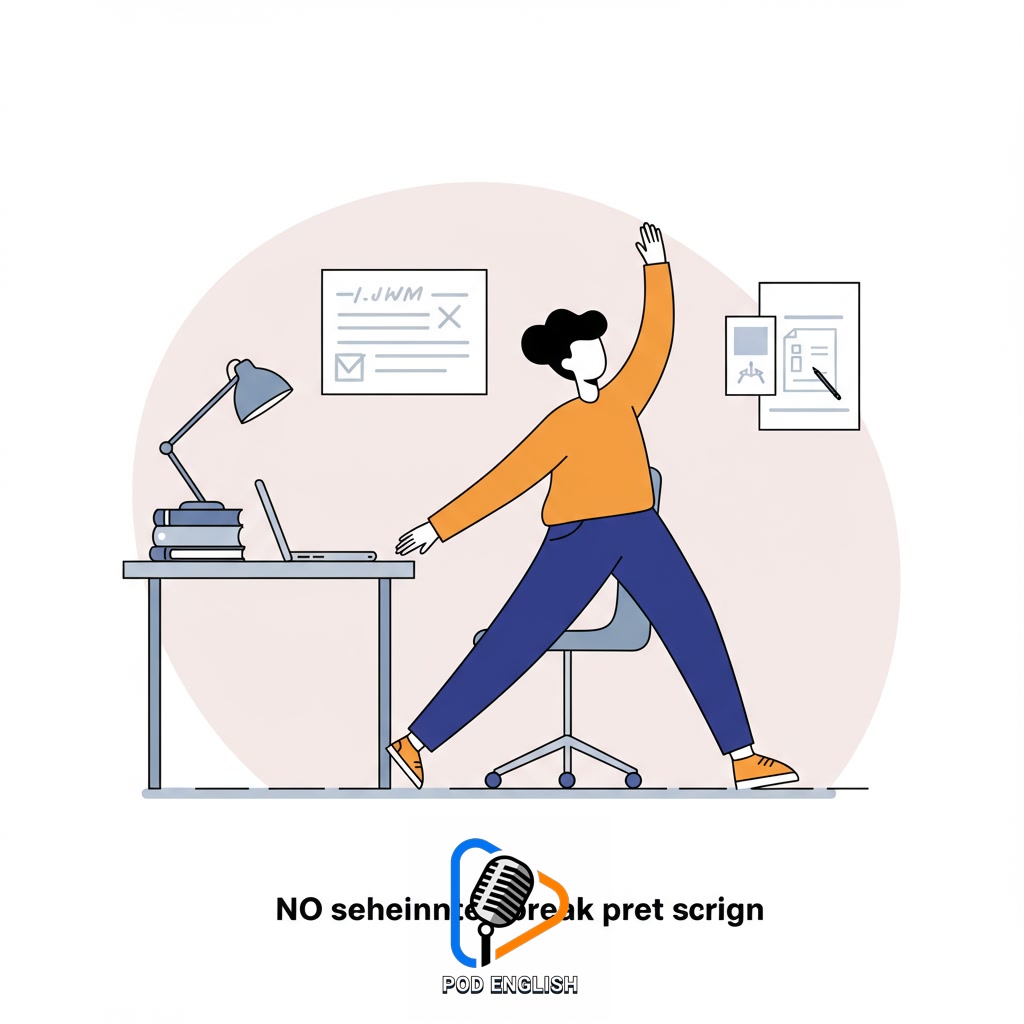Learn English
Unlock Faster English Learning with Physical Activity Breaks

Integrating physical activity breaks into your routine can significantly enhance the efficiency of your English language learning journey. Short bursts of movement help to refresh the mind, improve focus, and boost cognitive function necessary for absorbing new vocabulary and grammar. This method leverages the body-mind connection to potentially accelerate your progress in mastering English skills. By incorporating physical breaks, learners can experience a more dynamic and effective approach to language acquisition.
Table of Contents
- Section 1: Introduction: The Challenge of Faster English Learning
- Section 2: The Brain-Boosting Benefits of Physical Activity for Learning
- Section 3: Designing Effective Physical Activity Breaks for Study Sessions
- Section 4: Simple Exercises and Movements to Energize Your English Study
- Section 5: Integrating Movement into Specific English Learning Activities
- Section 6: Tracking Progress and Maintaining Consistency
- Section 7: Conclusion: Making Activity Breaks a Habit for Accelerated English Proficiency
Section 1: Introduction: The Challenge of Faster English Learning
Many individuals aspire to learn English quickly, driven by career goals, travel ambitions, or personal enrichment. However, the path to accelerated language acquisition is often fraught with challenges. Learners frequently struggle with maintaining intense focus during extended study periods. The vast amount of new vocabulary, intricate grammar structures, and subtle pronunciation differences can feel daunting, leading to feelings of overwhelm or hitting frustrating plateaus. Traditional study approaches, while essential, can sometimes become repetitive, making it difficult to sustain motivation and absorb information efficiently. This section introduces these common obstacles faced by those attempting to speed up their English learning journey, highlighting the need for strategies that can enhance focus, retention, and overall learning efficiency.

Section 2: The Brain-Boosting Benefits of Physical Activity for Learning
Physical activity isn’t just good for your body; it’s a powerful ally for your brain, especially when tackling complex tasks like learning English. When you move, even for short bursts, your heart rate increases, pumping more oxygen and vital nutrients to your brain. This improved blood flow enhances cognitive functions essential for language acquisition, such as focus, memory, and problem-solving. Regular movement helps create new neural pathways and strengthens existing ones, making it easier to absorb new vocabulary, understand grammatical structures, and retain information long-term. Furthermore, physical activity can reduce stress and anxiety, common barriers to effective learning, creating a more receptive state for your brain to process and internalize English. Incorporating these breaks means you’re not just resting your body, but actively preparing your brain for more efficient learning sessions.

Section 3: Designing Effective Physical Activity Breaks for Study Sessions
Designing effective physical activity breaks is key to maximizing their benefit for English learning. These breaks don’t need to be long; even 5-10 minutes of movement can be highly effective. Plan them into your study schedule rather than waiting until you feel tired. Simple activities like standing up and stretching, walking around the room, doing a few jumping jacks, or following a short online exercise routine can work wonders. The goal is to get your blood flowing and shift your focus momentarily, allowing your brain to reset before returning to vocabulary lists or grammar rules. Listen to your body and choose movements that feel good and re-energize you, ensuring you return to your English studies feeling refreshed and more focused.

Section 4: Simple Exercises and Movements to Energize Your English Study
Incorporating simple exercises and movements into your English study breaks doesn’t require a gym or complicated routines. Even a few minutes of targeted activity can significantly re-energize your mind. Consider movements like light stretching for your neck, shoulders, and back to release tension built from sitting. Walking in place, doing a few quick jumping jacks, or even simple desk-based exercises like shoulder rolls or leg lifts can boost circulation and wake up your body. These brief physical actions help clear mental fog, reduce fatigue, and improve blood flow to the brain, priming you to return to your English materials with enhanced focus and readiness to absorb new vocabulary and grammar.

Section 5: Integrating Movement into Specific English Learning Activities
Moving beyond simple breaks, you can actively integrate physical movement into the learning process itself. Try walking around while reviewing vocabulary flashcards or listening to an English podcast or audiobook. When practicing speaking aloud or reading a challenging text, gentle pacing or standing can help maintain focus and energy. Simple stretches or light exercises can be done while contemplating grammar rules or planning a writing assignment. This direct combination of physical activity with specific learning tasks leverages the body-mind connection more intensely, making the absorption and retention of new English concepts potentially more effective and less mentally draining than static study sessions.

Section 6: Tracking Progress and Maintaining Consistency
To truly benefit from integrating physical activity into your English learning, consistency is key, and tracking your efforts can significantly help maintain momentum. It’s not about rigorous workouts, but about making these active breaks a regular, almost automatic part of your study routine. You can track your progress simply by noting down in a planner or a digital app how often you take a movement break or combine activity with learning tasks like reviewing vocabulary. Seeing a visual record of your consistency can be highly motivating. Set small, achievable goals, such as taking two 5-minute movement breaks during a 90-minute study session, or walking for 15 minutes while listening to a podcast three times a week. Regularly reviewing your tracking helps you identify patterns, celebrate achievements, and adjust your approach to ensure these active habits support, rather than disrupt, your language acquisition journey.
![]()
Section 7: Conclusion: Making Activity Breaks a Habit for Accelerated English Proficiency
Making physical activity breaks a consistent part of your English study routine is the final step to unlocking their full potential. As highlighted previously, consistency transforms these short bursts of movement from occasional additions into a powerful, integrated habit. This habit solidifies the benefits: sharper focus, better memory retention, and enhanced cognitive function, all crucial for absorbing new vocabulary and grammar effectively. By habitually combining physical activity with your learning sessions, you create a dynamic synergy that not only makes studying more enjoyable but also significantly accelerates your journey towards English proficiency. Embrace this simple yet profound habit and experience a noticeable boost in your learning speed and overall mastery.














